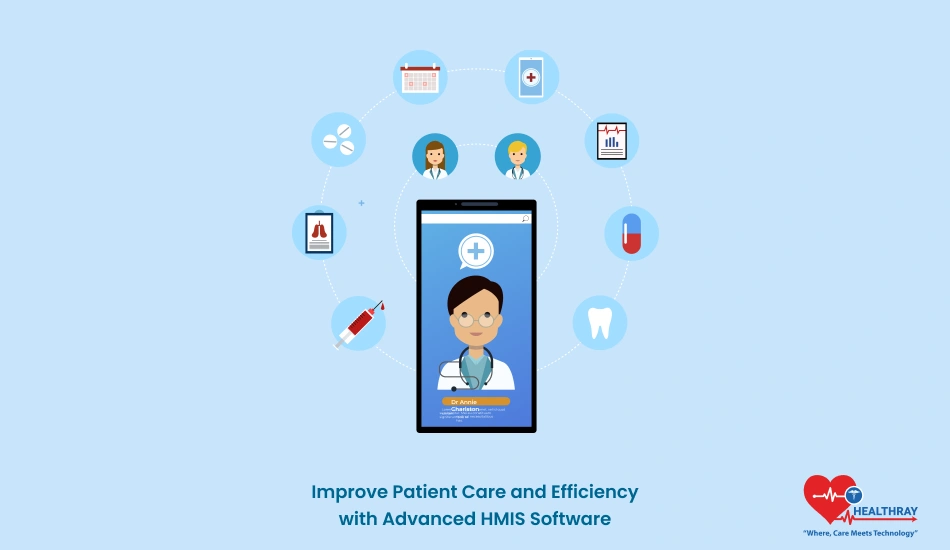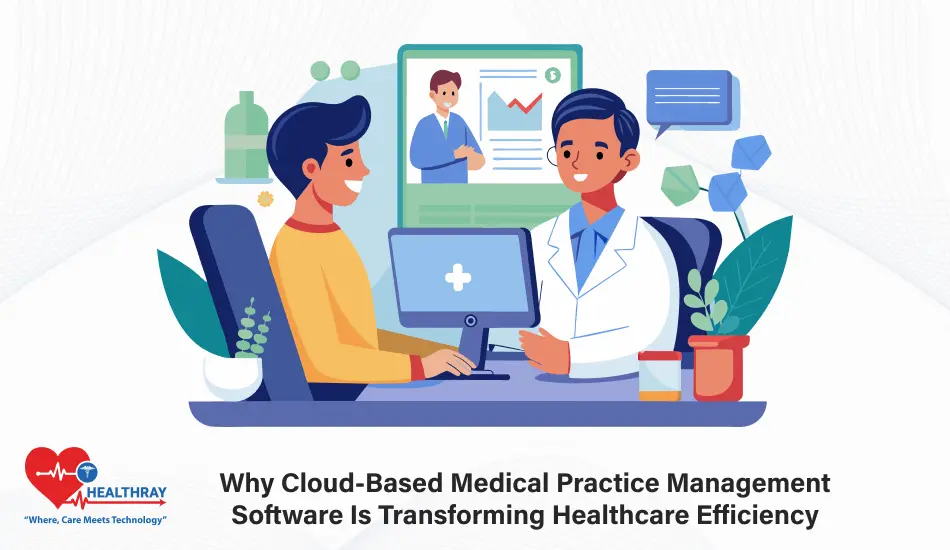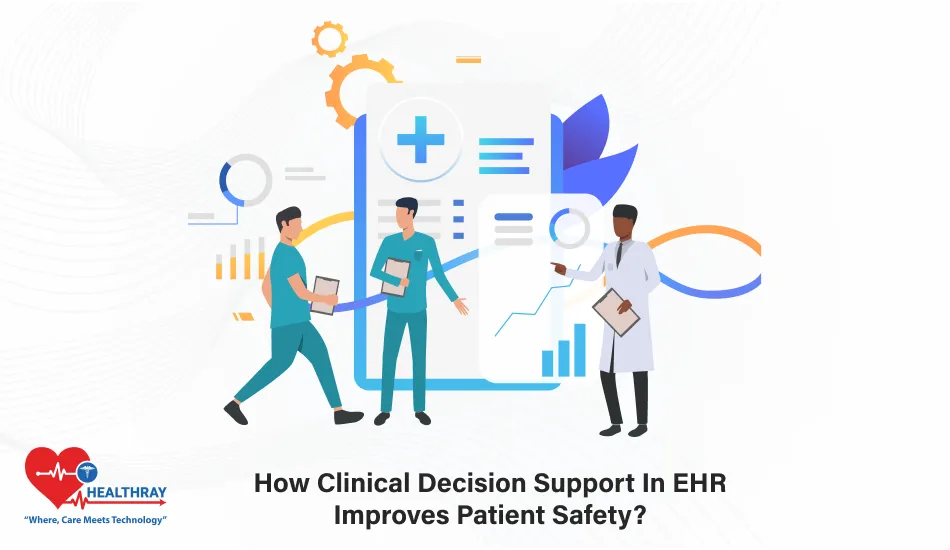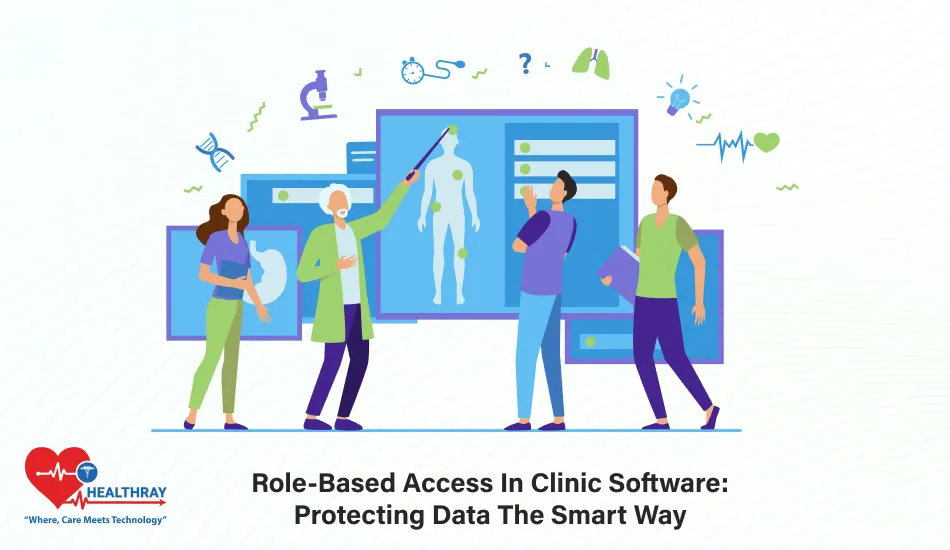Specifically, it removes administrative workload, optimizes the workflow of the patient records, and allows doctors, nurses and administrators make more precise decisions. But, what, in practice, does it do to become responsible for enhancing the patient care and the efficiency of hospital operation?
Ultimately, HMIS software aims at consolidating and automating hospital operations, providing a single platform for scheduling, billing, treatment logs, and other activities. This embodiment results in a decrease in direct manual work, in paperwork, and hence healthcare professionals are able to devote more time to their patients as opposed to getting bogged down in forms, processes, etc. The result? Better and more accurate care, reduced risk of human error and improved overall patient experience.
This article will break down the benefits and essential features of advanced Hospital Information Management System software. It will describe the operation of these systems, how they can further efficiency in hospitals and medical centres and the increasing relevance of such systems to modern medicine. We’ll also explore practical challenges, ways to overcome them, and the exciting future of HMIS in patient care. Prepared to view how your hospital can provide even better care and think smarter? Let’s dive in.
What is Advanced HMIS Software?

The third generation HIMS is as the command centre of a hospital. It is aimed at inclusion of operational, clinical, and economic perspectives to consider in the management of a hospital, all from a single centralized platform. However, HMIS is more than just that other; it is a system capable of driving efficiency and ultimately delivering good patient care through instant access to real-time information.
Key Components of HMIS Software
1. Patient Information Management
- Centralized Patient Records: For each patient’s data set (e.g., medical history, lab results, etc) it is safely stored in the system. This summarization allows doctors and nurses to obtain data in real time, reducing delays and errors.
- Real-Time Data Access: Since data is given in real-time when a patient conducts a new test or a new procedure, the recent changes are immediately accessible to all members of the medical team.
2. Clinical Decision Support
- Automated Alerts: HMIS systems also contain decision support systems that give clinicians a heads up about possible problems, like drug interactions, allergies, or abnormal lab values. Such alerts contribute to minimize the risk of medical errors and appropriate, patient-specific treatment.
- Treatment Protocols: HMIS can also incorporate EBGs, offering clinicians current treatment recommendations in accordance with individual patient circumstances.
3. Resource Management and Optimization
- Efficient Use of Hospital Resources: Live monitoring of resources such as open beds, staff schedules and equipment utilization are helpful in optimizing the distribution of these resources. This function is particularly valuable during overload or crises.
- Reduced Waiting Times: Automation of resource allocation can ensure that the HMIS can decrease patient waiting times and increase the hospital´s throughput. For example, a surgical patient can be efficiently scheduled and prepped as all the pieces of the puzzle are already in place, i.e., surgical teams and equipment.
4. Administrative Automation
- Appointment Scheduling and Billing: By using automated schedule, patients are able to make and reschedule appointments easily. Integrated billing makes everything easier for patients and staff, minimizes errors and accelerates the payment cycle.
- Inventory Management: The software is utilised to record inventory in real time and to track medical supplies and pharmaceuticals that are monitored by the software and guarantees critical stocks are never short and so that ordering beyond requirement is avoided.
5. Data Security and Compliance
- Data Encryption: Because patient data is very sensitive, the HMIS software has been developed with strong cryptographic capabilities, which protect the information from the unauthorize access.
- Access Control and Compliance: Information access is limited to certain subjects who are authorized, at the same time ensuring that the obligations regarding the compliance to the healthcare law and the safekeeping of the patient’s privacy are fulfilled.
Enterprise class HIMS in Healthcare transforms hospitals into highly cohesive systems in which information is accessible to every member of the staff in seconds, rather than hours. The ability for the software to analyze large quantities of data, make clinical decisions, and automate administrative tasks has tremendous implications for health providers today.
Key Benefits of HMIS in Improving Patient Care

Upgraded HMIS software yields a number of direct advantages to hospitals and clinics, and dramatically transforming the way patient care is offered. In a system system that incorporates administrative, clinical and financial work, health care professionals can build an environment which is more effective and patient focused. Let’s look at how HMIS‘s in turn can help to provide improved patient care, increase efficiency, and ultimately leads to a more seamless health care experience.
Enhanced Decision-Making and Reduced Errors
A feature that sets one of the most prominent advantages of HMIS software apart from the others is its capacity to assist clinical decision making. Medical staff may have access to a complete patient’s medical history with the information of treatments received, laboratory results, allergies and current pharmaceuticals within a few seconds. The availability of detailed information at hand enables clinicians to take properly informed decisions, adapted to the patients’ personalized needs.
Additionally, automated alerts are built into HMS Software to warn providers of potential medication interactions, allergies, or any abnormal findings in diagnostic tests. These point of care warnings prevent medical errors, which results in better and more predictable patient care.
Streamlined Patient Management and Reduced Wait Times
In terms of data management, HMIS can be applied in the following process, from scheduling to treatment, and then from treatment to discharge. This has a smoothing effect on the patient experience leading up to the patient’s healthcare encounters, with decreased waits between seeing the patient. For example:
Faster Admissions and Discharges: Tasks which can take hours, such as completing a form, or gathering test results can be finished in minutes thanks to digital and automated processing.
Optimized Scheduling: Using the capability to optimally schedule appointments and other tests and procedures, HMIS reduces double bookings and delays to obtain timely visits for patients. Reducing waiting time and variation in patient flow improves the ability of hospitals to increase patient satisfaction and better regulate the medical staff so they do not feel overworked.
Better Resource Utilization and Cost Savings
HMIS helps optimal use of the resources of hospitals, such as staff, beds, equipment and medical supplies. Administrators can identify bottlenecks or lack of supply by following these resources in real time and they can respond quickly.
There is an implementation parallel between optimal use of resources and cost reduction for the hospital. Operation cost of hospital can be significantly decreased by minimizing waste and preventing wasting the resources unnecessarily. For example:
Inventory Tracking: HMIS facilities the recording of medical goods, the stock control of such goods, so that they are restocked where necessary, to prevent an overwhelming supply of goods or a shortage of goods that will cause a delay in providing patient care.
Reduced Overtime Costs: With improved scheduling, and resource management staff will be less inclined to work extra hours so this can be used to help manage staffing expenses.
Improved Patient Engagement and Satisfaction
Many HMIS systems have patient portals which allow patients to access their medical records, schedule appointments, and communicate with their providers. Voluntarily providing patients with effortless access to their data retains them informed and thus, more engaged in treatment. This transparency fosters trust and strengthens the patient-provider relationship.
Furthermore, patients with the ability to easily schedule postoperative care appointments, view laboratory results, and interact with the medical care staff are better at being proactive about their health. This leads to improved clinical outcomes, because patients are happier leaving treatments, and returning at periodic intervals for monitoring.
Enhanced Data Security and Compliance
Patient privacy is a significant issue in health care, and health information management systems (HMIS) software have been developed with this issue in mind to address it, using robust data security measures such as encryption and role-based access control. With the aim of protecting patient privacy and operate the hospital records as compliant as allowed in health law, HMIS has been built so that access to the sensitive data is limited to the intended users.
HMIS also records exactly who has access to patient records and when, adding to the security. The consequence is that hospitals do not comply with industry legislation and then demonstrate their safeguarding of patient information.
Overcoming Challenges in HMIS Implementation
With transformative value for patient care and operational feasibility, implementation of a sophisticated Hospital Management Information Software (HMIS) holds tremendous promise, however, the journey is far from being a walk in the park. Technology adoption is often challenging in hospitals and clinics, involving issues of costs, staff training, and system integration with existing infrastructure. Below is a description of these common obstacles and the ways in which healthcare organizations can successfully manage them so that HIT’s promise is borne out.
Staff Training and Change Management
For many hospitals, the shift to a fully digital HMIS can be perceived as a very big change. Healthcare professionals, ranging from the administrators up to doctors and nurses, may have a hard time to adapt to a new system when they are accustomed to performing manual tasks or by using paper records. Resistance to change is inherent, but can be destructive to the implementation of the HMIS if not dealt with effectively.
Comprehensive Training Programs: The transition can best be managed, however, by a thorough, ongoing training process. It should be ensured that practical training assignments, user manuals and ongoing support are given to staff so that they are happy to use the new system. Even some hospitals have a designated “HMIS champion” on staff, an experienced member of the team who assists colleagues in learning and implementing the system.
Clear Communication on Benefits: Staff benefits of HMIS should be described as fully as possible to treat anxiety. If employees see the purpose of HMIS in minimizing their work load, minimizing amount of work that will be on paper, then all the better, than to sacrifice what it means for patients to get their current results with the expectation of improved future results, then they are likely to comply.
Data Migration and System Integration
Migrating data from the old systems to the new HMIS is likely to be one of the most difficult parts of the process. Hospitals can contain decades of on paper records, old systems, or data in boxes, and it is essential that all of these data are properly migrated without any loss or duplication for good patient care.
Detailed Data Migration Plan: Having a well-organized migration plan is essential. This framework is expected to give an indication of the data that will be moved, the format it will be moved in, and any potential issues that could arise. Testing the data migration process on a subset of data before transferring all data into the production environment can be used to detect and correct flaws at an earlier stage.
Integration with Existing Systems: In general, health care institutions use a variety of systems for a variety of functions such as billing/laboratory management. A key factor is to select an HMIS that will ideally integrate well into these existing systems in order to prevent data silos and to ensure an easy data transfer between departments.
Financial Considerations and Initial Costs
However, the cost of this investment in developing an HMIS may be a significant barrier, especially for smaller hospital or clinic with a limited budget. Despite the potential accumulation of long-term cost savings and efficiency for HMIS, the initial cost of software, hardware and training will be significant at the beginning.
Budget Planning and Cost-Benefit Analysis: Careful financial planning is essential before implementing an HMIS. Hospitals must take a hard cost-benefit look to figure out what the expected return on investment (ROI) will be for “time saved,” “errors prevent,” “better patient outcomes.
Exploring Scalable Solutions: For facilities with budget constraints, choosing scalable or modular HMIS solutions can be a more affordable option. Several vendors offer cloud-enabled HMIS, which allows hospitals to subscribe to only those functions that they need and to scale up based on the number of such needs.
Maintaining Data Security and Privacy
Due to the nature of medical institutions to handle confidential patient healthcare information, the concerns are data security and the compliance to health information privacy law. Providing HMIS is a risk of information disclosure if the system has poor security measures.
Adoption of Strong Security Measures: Security of patient information necessitates that hospitals have a well-defined security infrastructure for their HMIS, such as data encryption, strong multi-factor authentication, and regular security audits. Software upgrades from time to time can also defend the system from attack.
Compliance with Regulations: Compliance with data privacy regulations of healthcare, e.g., the HIPAA regulation in the United States, is very important. In hospitals, it is necessary to collaborate with HMIS agencies closely in order to ensure that all statutory requirements are fulfilled, and any of these statutory requirements are dealt with, in order to allow the system to go live.
Ongoing Support and System Maintenance
Regular upkeep and support are still necessary for continued fulfillment of an HMIS even after an HMIS is live. However, if training refreshers, routine updates and fast solution of the same problems are also missing, efficacy of the system will decline over time.
24/7 Vendor Support: As a benefit, having a vendor who offers 24 hours per day, 7 days per week technical support is a practical advantage that allows for prompt intervention in the event of system failures and user errors. Because of thorough, dedicated support, software upgrades and security fixes are also installed without delay.
Conclusion
The use of sophisticated Health Information Management Systems can radically change both patient care and operational efficiency in hospitals and clinics. From facilitating clinical decision making forward to the enhancement of administrative workflow and the improvement of data security, HMIS is providing essential tools for the clinician, thus allowing for a better patient experience and for promoting a better efficiency in the hospital framework. Although problems such as training personnel and moving data can create a heavy lift, with proper planning the rewards are well beyond the burdens. As technologies evolve, HMIS systems will continue to develop and integrate technologies, such as AI, IoT, and blockchain technology, etc. with an aim of improving the precision and the provision of healthcare services.
For hospitals who want to deliver first class patient care and administer assets effectively, choosing to invest in HMIS does not have to be a strategic decision but is actually an inevitable choice on the path to a healthier, slimmer healthcare future.





